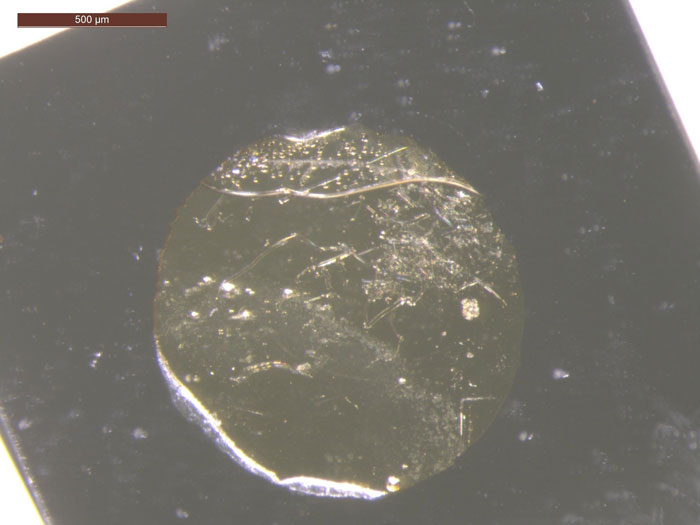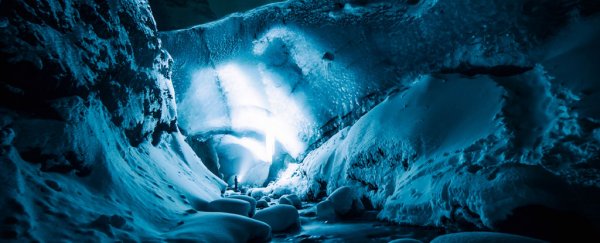Not all ice is the same. In distant realms far beyond this world's Slurpees, melting glaciers, and the Ice Bucket Challenge, water hardens into a solid state in strange ways that just aren't possible here on Planet Earth.
Now, for the first time, scientists have managed to catch one of these alien, otherworldly ices in the act as it crystallises – recording water freezing into a structure called Ice VII (aka 'ice seven') under extreme, controlled conditions in the lab.
"These experiments with water are the first of their kind, allowing us to witness a fundamental disorder-to-order transition in one of the most abundant molecules in the Universe," says geophysicist Arianna Gleason from the Los Alamos National Laboratory in New Mexico.
But wait – if you're wondering what happened to Ices I through to VI already, you've got another thing coming. There are actually around 20 known crystalline phases of ice, and only two of them – hexagonal ice and cubic ice – occur naturally on Earth.
Hexagonal ice, also known as Ice Ih (ice one h), is the structure of pretty much all the frozen water humans ever come into contact with on Earth's surface, while cubic ice (Ice Ic, or ice one c) is thought to sometimes form in our planet's upper atmosphere.
 Ice VII. Credit: Arianna Gleason
Ice VII. Credit: Arianna Gleason
All the other kinds of ice would only occur in conditions involving extreme temperatures or pressures not found here on Earth. Sometimes scientists can replicate those parameters in the lab and artificially create foreign ice structures, while at other times they only exist in simulations, being too difficult to actually synthesise.
In the case of Ice VII, this incredibly dense form is thought to naturally occur when icy planetary bodies collide in space, bringing an insane amount of pressure to bear on any liquid water molecules caught in the squeeze.
To recreate the intensity of such a hypothetical clash, Gleason's team fired a laser at a layer of diamond adjacent to a small cell containing liquid water.
Doing so vaporised the diamond and generated an intense shock wave, compressing the water to a pressure some 50,000 times greater than the Earth's atmospheric pressure at sea level and triggering the phase change from liquid to solid.
At the exact same instant, pulses from a strobing X-ray laser imaged the water as it underwent its transformation, providing the first record of Ice VII crystallising on Earth.
"It really is like a tiny rocket effect," Gleason told Sarah Lewin at Space.com.
"We discovered that we can transform the liquid into a solid just by moving the shock wave through. And during that tiny, short amount of time – it really is only a few nanoseconds, that's a billionth of a second – we probe with these ultrafast and brilliant X-ray pulses."
According to the team, this kind of laser setup could help scientists to capture some of the other mysterious ice structures at the moment of crystallisation – and the things we can learn from studying these molecular transitions aren't purely theoretical.
With Ice VII, for instance, knowing how ice crystals form on icy moons and comets could help us prepare for future space exploration to destinations like Jupiter's moon Europa, and help us understand why impact craters form the way they do on battered off-world landscapes.
According to planetary scientist Sarah Stewart from the University of California, Davis, who wasn't involved with the study, there's no shortage of demand for these kinds of insights.
"Looking at the fundamental materials that are everywhere in the Solar System to understand what happens under dynamic pressure," she told Space.com, "as a materials scientist, you eat this up."
The findings are reported in Physical Review Letters.
